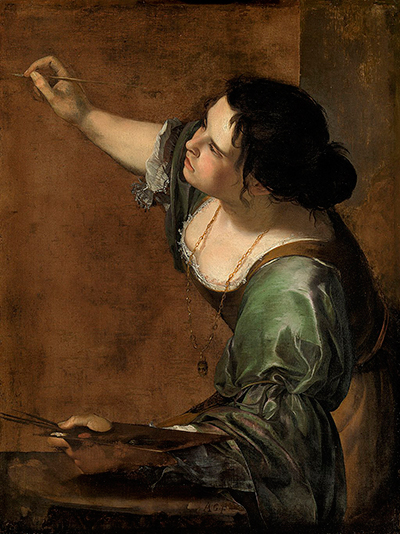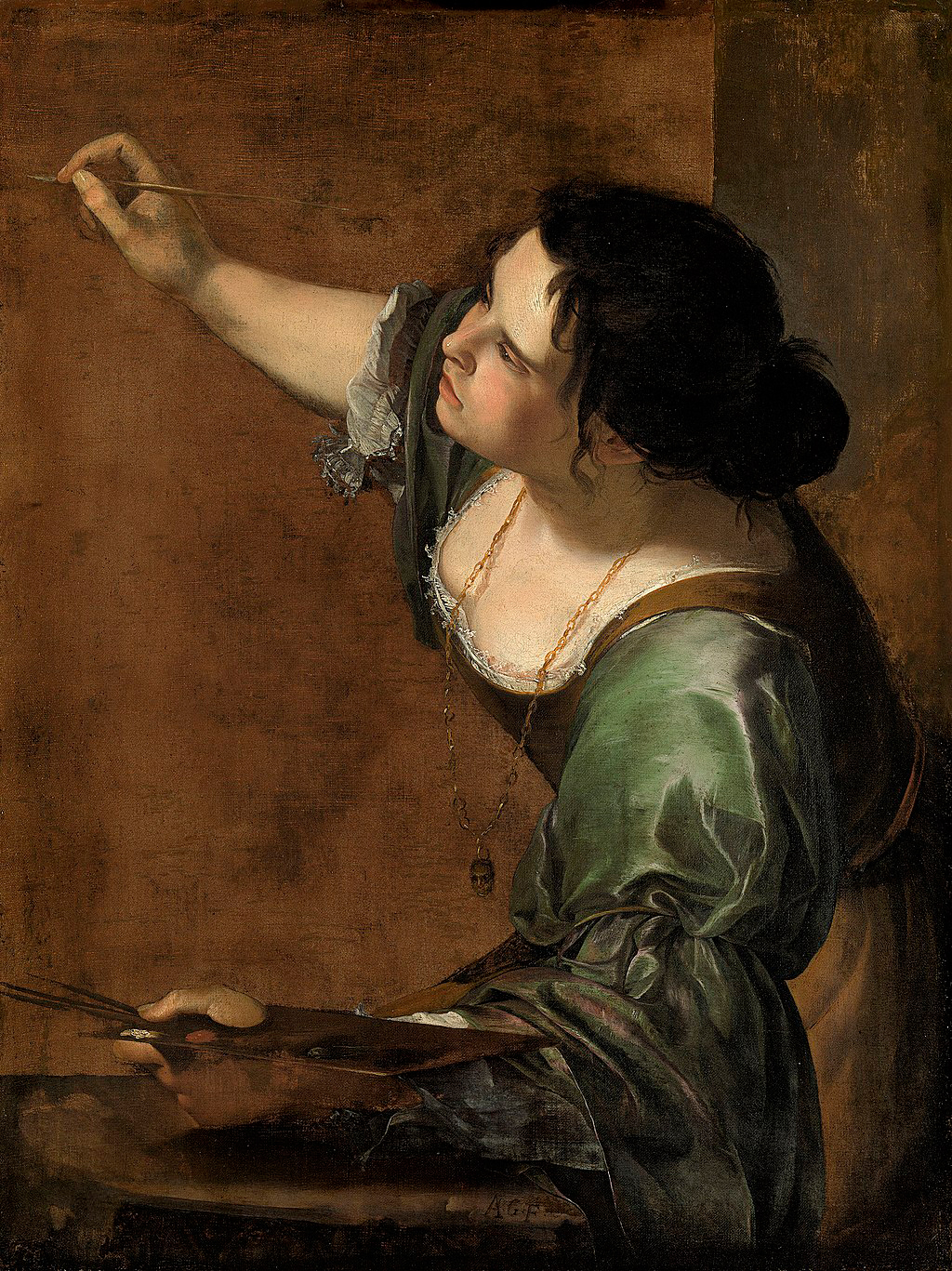Self-Portrait as the Allegory of Painting is an intriguing piece from Artemisia Gentileschi and is also currently the only artwork from during her period living in the city of London.
She moved across to this city in order to see her father, Orazio, who was a member of the court of Charles I at the time. He had played a crucial role in early development as an artist and she would have felt particularly grateful for this. He would arrange a series of tutors at their family home in order for her to learn the different disciplines required in order to become a skilled and fully rounded artist. At that time she could not afford her own models and so was stuck with the males employed by her father or would have to play the parts of any women herself. Some of the items that the tutors specialised in were perspective and the mixing of colours. It was not until she moved out from the shadow of her father was she to truly develop, both artistically but also as a human being.
She produced a somewhat idealistic portrait of herself as she would have been significantly older when she painted this scene than she appears to be in the artwork. In other self portraits she would dress up as characters from the past, though sometimes she would be styled purely as herself. This scene captures her leaning over her easel, delicately touching paint on to a large canvas. This angle would not have been possible to paint through mirrors and so she must have found an alternative method of posing for this piece. She is also dressed fairly elegantly for someone painting, and would she really have worn clothes such as this when working, in reality? Possibly not. Gentileschi often captured herself in the image of others within her paintings but here chose to directly incorporate herself into the painting in an honest but slightly amended depiction. Many have suggested that she used Judith within several versions of Judith Slaying Holofernes (Naples) as a means to giving herself her own form of justice over an historical assault which has been well publicised.
This painting can be described as both a self portrait but also as an allegorical painting, though traditionally the art of painting has always been symbolised by the female figure, meaning no male artist would have been able to work in this way. This combination of two different artistic genres helps to explain why this artwork has been subject to far more discussion by academics than almost any other from her career. The main debate is how much of the content and style is dedicated to purely producing a self portrait, and how much is representing symbolically the literal art of painting. There has been plenty of scope for arguing towards both sides of that debate, and few answers are likely to appear now, with so many centuries having passed since this piece was produced in 1638-1639 whilst the artist was actually staying in the UK. She had been attracted to the country by the success of her father, Orazio, who had lived there for many years.
The artwork would be declared within the inventory of Charles I but there would be confusion as to its date, because of the youthful appearance of the artist, despite the belief being that she was in her forties at the time of producing this work. This led to suggestions that the artist had actually painted her own daughter but eventually the conclusion was drawn that Artemisia had simply chosen to capture herself a decade younger. Various periods of research since then seem to have solidified this as an accepted opinion and today the piece is widely given the date of 1638-1639 and also from the hand of the same artist, without any need for a footnote. A technical study of the work has described of how she used paint fairly concisely and economically in this painting, with a gentle touch for the jewellery which reminds some experts of more contemporary artistic techniques. It is also known that very few amendments were made during the process of this artwork, where the study of lower layers of oil can often reveal all manner of compositional decisions made as the work progressed - it was therefore delivered with a confidence that underlined her maturity as an artist by this point in her career.
"...A woman, beautiful, with full black hair, dishevelled, and twisted in various ways, with arched eyebrows that show imaginative thought, the mouth covered with a cloth tied with a cloth tied behind her ears, with a chain of gold at her throat from which hangs a mask, and has written in front 'imitation'. She holds in her hand a brush, and in the other the palette, with clothes of evanescently coloured drapery..."
Cesare Ripa
The painting remains a part of the Royal Collection having originally been owned by Charles I. He received considerable criticism for spending public money on building up an extraordinary art collection but much was sold off after his death. This actual painting is dated at 1638–39, by which point the artist would have been aged in her late forties. She would spend these same years in London but it has not been possible to be any more accurate than that for this particular piece. It is currently, at the time of writing, on display at Hampton Court Palace, with the Royal Family owning such a large collection of work that it makes sense to loan them out to various institutions fairly regularly. This ensures that these prize pieces can be enjoyed by the public and also puts the family itself in a more positive light. Many of the items within their collection have been handed down many generations and have been paid for through the wealth of the Empire, dating back centuries. In other cases there have even been spoils of war which have been acquired, or gifts from royal visits abroad.
This painting, Self-Portrait as the Allegory of Painting, is officially owned by the Royal Collection Trust which is an organisation who are responsible for organising, documenting and preserving the considerable selection of art and antiquities which are owned by the British Royal Family. They are believed to have around 7,000 oil paintings within the inventory, as well as many thousand more drawings and watercolours as well. Other items include furniture, antique clocks and also some highly significant books and manuscripts. This huge selection is then dispersed between the many different properties under the family's ownership, with the remaining elements then kept in storage and sometimes rotated between different displays. Many of the best works are saved specifically for Buckingham Palace which is particularly focused on the genre of the Italian Renaissance era.





